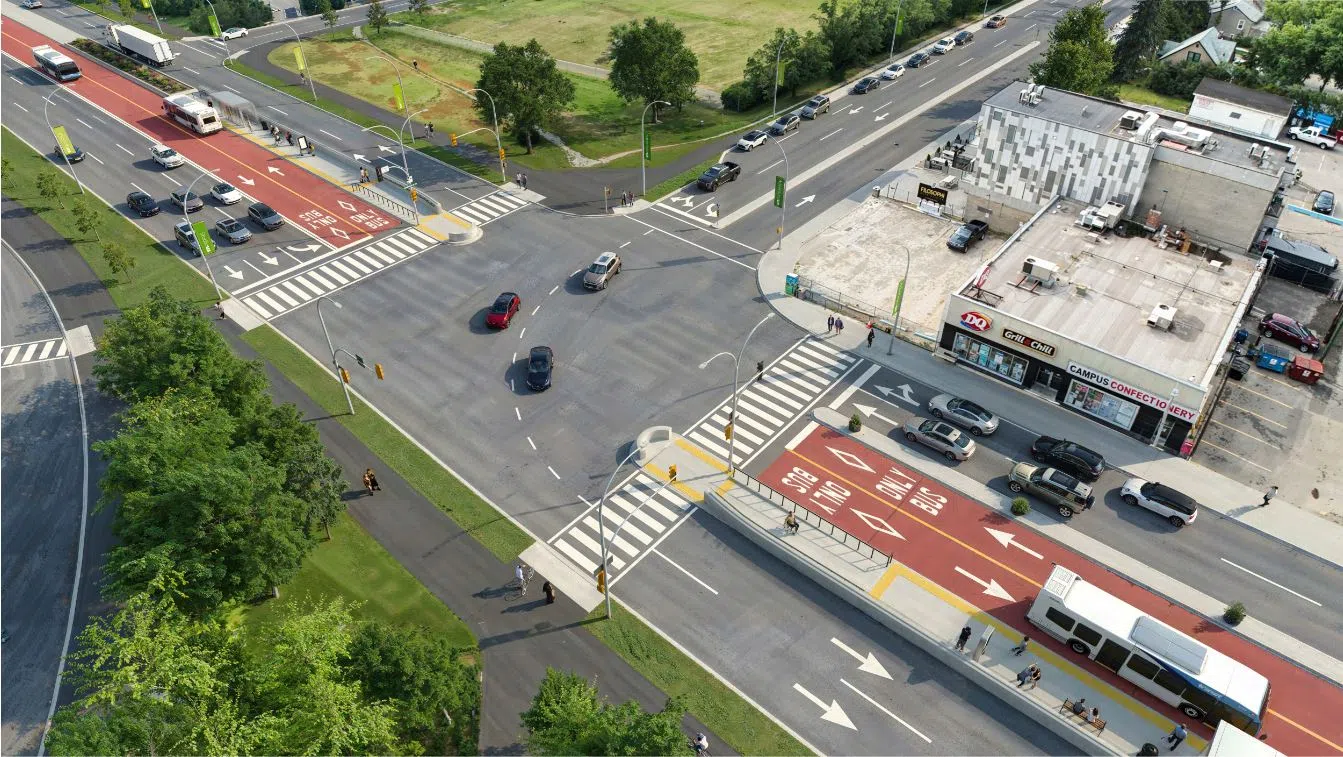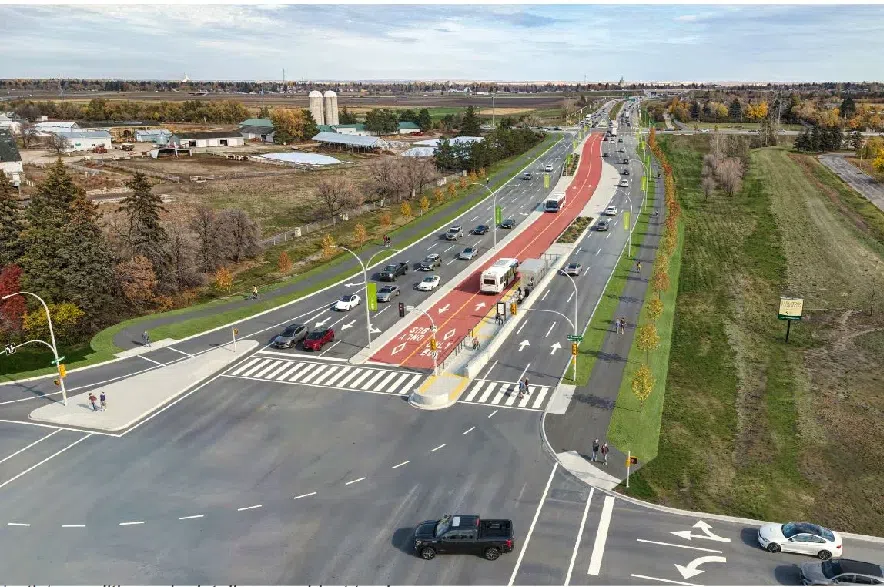Saskatoon city council is asking its administration to have another look at the design for one portion of the new Bus Rapid Transit (BRT) route on College Avenue between Preston Avenue South and Clarence Avenue.
At Wednesday’s meeting, council unanimously approved deferring approval of the extensive project until sometime in June.
The $250 million project will see 73 per cent of the cost covered by the provincial and federal governments.
The BRT project was approved by city council in 2018, and construction on the first eight platform stations was completed in 2024.
The hope is to build another 44 platforms around the city in 2025 before construction on College Drive begins sometime in 2026. The system launch is planned for 2028.

Artist rendering of the intersection of College Drive and Cumberland Avenue showing pedestrian platforms and dedicated transit lanes (City of Saskatoon/submitted).
During Wednesday’s meeting, former Saskatoon mayoral candidate and current council critic Cary Tarasoff expressed his concerns about some of the planning, including pedestrian platform capacity and designs.
“Perhaps we need to solve serious problems with this BRT first, before we approve any more expenditures. After all, we want to take the time to ensure this is done correctly from the start, don’t we?” he asked.
Tarasoff also questioned whether administration had considered that Saskatchewan Polytechnique would also be located near the new BRT project, and whether additional student transit capacity had been factored into the project plans.
“They’re (administration) going to wait for us to pay for it all and then later say that they need to fix it, that it was unforeseen,” he challenged council.
Terry Schmidt, Transportation and Construction General Manager, said pedestrian capacity on platforms had already been factored in.
“There’s a lot of thought that goes into the placement of these, they’re approximately 450 metres apart. We also consider the size of the station platforms. We also incorporate the frequency of the buses,” he said.
“So, there’s 10-minute frequency during peak hours on this corridor… if there are special events, we can bring in additional capacity for the buses and run them even (with) increased frequency.”
The actual platform capacity is about 200 people, according to Schmidt.
However, Coun. Zach Jeffries also had some questions and concerns regarding whether additional land acquisition was considered for the project, especially near Preston Avenue and Clarence Avenue, because left-hand turning along College Avenue onto Preston tends to spill into additional lanes during peak travel hours.
“How does this tie into the future plans to actually make College Drive leading out to the east end of the city three lanes?” Jeffries asked Schmidt. “How does this compare in our transportation modelling to some of the previous iterations and to the existing state?”
Schmidt replied, saying he’ll take the concerns back to the design team.
“I will take that back and ask the design team what those future plans are for College east of Preston Avenue and see if there are any significant changes that are needed in the future that could possibly be incorporated into this design at this time,” he said.
Jeff Jorgenson, city manager, said the city was trying to maximize the flow of people in the area.
“We’re trying to get as many people through a fixed corridor as we possibly can,” he added.
Coun. Jeffries said while he knew all of the information on the entire project wasn’t immediately available, he put forward a motion for council to delay the project’s approval.
“Certainly, there are a few things here that have prompted additional questions for me that I’d be interested in getting more information on,” he said.
The motion was seconded by Coun. Robert Pearce.
Construction is expected to begin in 2026, and the delay isn’t expected to affect that overall timeline.











